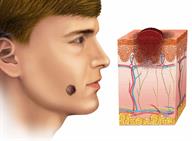ThisisPatientEngagementcontent
Mohs Surgery
Learn more about our Patient Engagement products now! Turn your patients into active participants in their healthcare by giving them easy access to the same evidence-based information you trust – but delivered in an easy-to-understand format.

Mohs surgery is a procedure that's done to remove skin cancer. In this procedure, skin cells with cancer are cut away layer by layer. The goal is to remove all cancer tissue while keeping as much healthy tissue as possible. Mohs surgery reduces scarring and allows for a better physical appearance.
Mohs surgery is often done on skin cancer in the face, scalp, ears, hands, and genitals. This procedure may be done if:Medicines
Surgery safety
For your safety, you may:These steps may vary. Ask what you can expect.
This information is not intended to replace advice given to you by your health care provider. Make sure you discuss any questions you have with your health care provider.
Cookies are used by this site. To decline or learn more, visit our cookie notice.
Copyright © 2025 Elsevier, its licensors, and contributors. All rights are reserved, including those for text and data mining, AI training, and similar technologies.